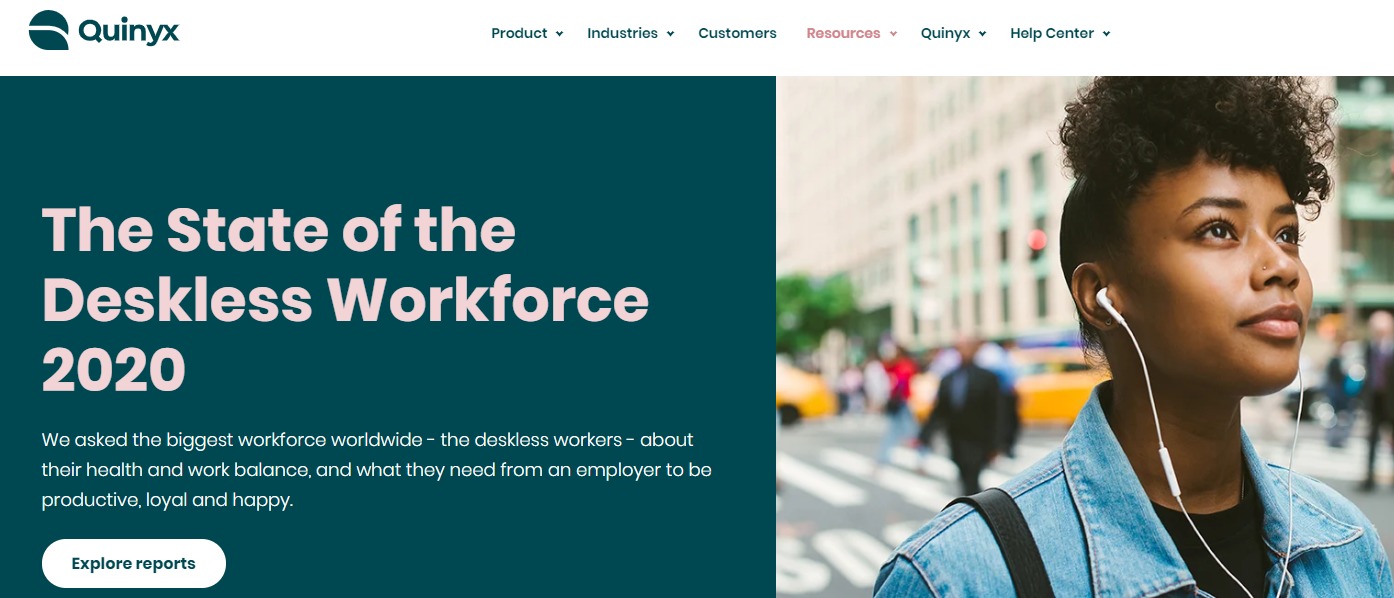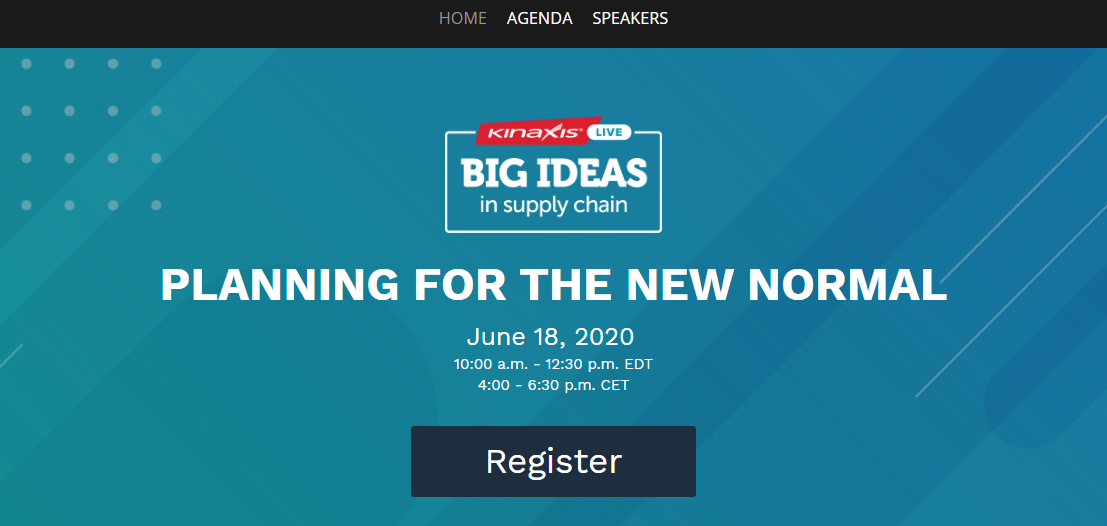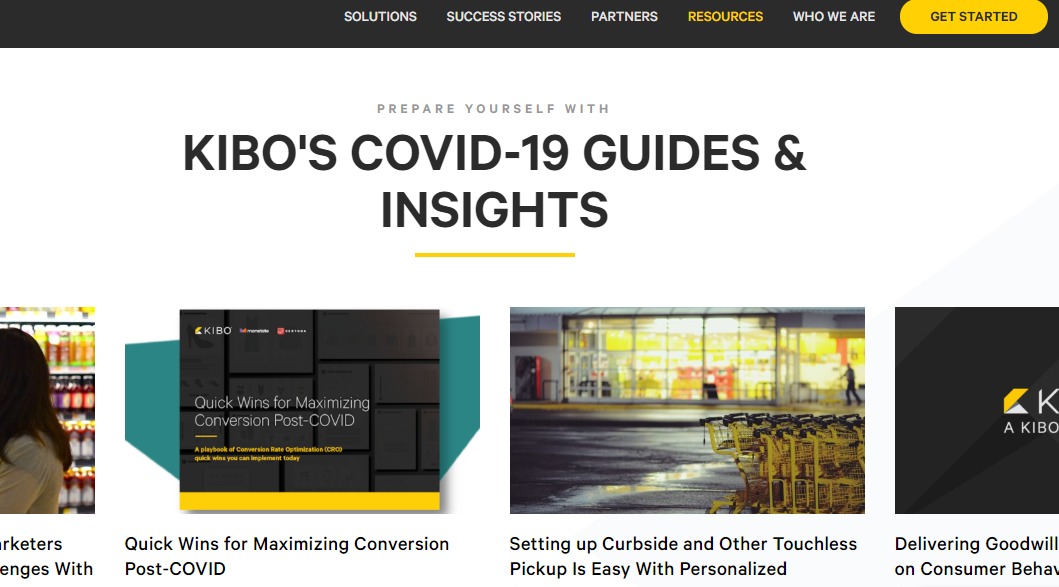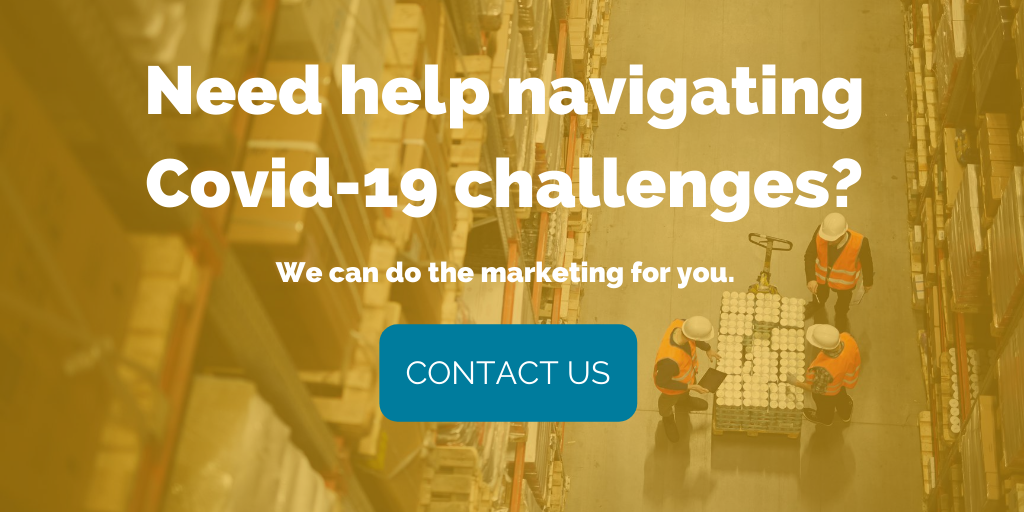
by Fronetics | Jul 14, 2020 | Blog, Covid-19, Marketing, SEO
Updated 1/21/25
Revitalizing Your Blog Archive: Modern SEO Strategies for 2025
Your company blog remains a valuable asset for search visibility, but the rules have evolved. Here’s how to breathe new life into your old blog posts using current SEO best practices — without overwhelming your team.
Why Update Old Content?
Search engines, particularly Google, have become increasingly sophisticated in evaluating content quality and relevance. While freshness remains important, it’s now just one factor among many. Google’s helpful content system and AI-driven algorithms prioritize comprehensive, authoritative content that genuinely serves user intent.
Our own data supports this evolution: a 2018 post about corporate social responsibility continues to perform well not just because it’s regularly updated, but because it thoroughly addresses the topic from multiple angles, matching the depth that today’s search engines expect.
The Modern Benefits of Blog Post Updates
Updating old blog posts delivers several key advantages in today’s search landscape:
- It signals to search engines that your site is actively maintained and authoritative in your field.
- It allows you to align content with current search intent patterns and semantic search capabilities.
- It helps maintain E-E-A-T (Experience, Expertise, Authoritativeness, and Trustworthiness).
- It provides opportunities to optimize for voice search and featured snippets.
- It enables you to incorporate new media formats that modern search engines favor.
Identifying High-Potential Posts for Updates
Rather than randomly updating old content, focus on posts with these characteristics:
Strong Existing Performance Signals
- Posts that already rank on page 2-3 for valuable keywords (these often have untapped potential)
- Content with high dwell time but low conversion rates
- Pages that earn consistent backlinks despite their age
- Posts that generate significant social engagement
Strategic Value Indicators
- Topics that align with current business priorities
- Content that addresses evergreen industry challenges
- Posts that target high-commercial-intent keywords
- Pages that compete with outdated competitor content
Modern SEO Update Strategies
1. Optimize for Search Intent
- Use tools like Google Search Console‘s search queries report to understand how users actually find your content
- Analyze the “People Also Ask” boxes for related topics
- Structure content to directly answer common user questions
- Consider adding FAQ schema markup for enhanced SERP visibility
2. Enhance Content Depth and Authority
- Expand sections that address key user pain points
- Include expert quotes and current industry statistics
- Add real-world examples and case studies
- Lnk to authoritative sources using targeted anchor text
3. Improve Technical SEO Elements
- Implement proper header hierarchy (H1, H2, H3)
- Optimize for Core Web Vitals (loading speed, interactivity, visual stability)
- Add structured data where appropriate (Article, HowTo, FAQ schemas)
- Ensure mobile optimization meets current standards
4. Enhance Media and Interactivity
- Add high-quality, original images with descriptive alt text
- Include interactive elements like calculators or assessment tools where relevant
- Embed relevant videos with proper schema markup
- Consider adding infographics or data visualizations
5. Internal Linking Strategy
- Create topic clusters linking related content
- Update anchor text to reflect current keyword targeting
- Remove links to outdated or redirected pages
- Add links to newer, relevant content
6. User Experience Optimization
- Break up long paragraphs for better readability
- Add table of contents for longer posts
- Include clear calls-to-action
- Optimize for featured snippet opportunities
7. Content Consolidation
- Identify and merge similar posts to create comprehensive resources
- Implement proper redirects for consolidated content
- Update internal links to point to new consolidated pages
- Maintain URL structure of the strongest performing page
Technical Implementation Best Practices to Update Old Blog Posts for SEO
When updating posts:
- Maintain the original URL to preserve link equity
- Update the “last modified” date in your CMS and XML sitemap
- Consider adding a “Last Updated” note for transparency
- Use proper schema markup to indicate the last update date
- Monitor Core Web Vitals before and after updates
Measuring Success
Track these metrics to evaluate the impact of your updates:
- Organic search traffic changes
- Featured snippet acquisition
- Position tracking for target keywords
- User engagement metrics (time on page, bounce rate)
- Conversion rates
- Core Web Vitals scores
The Bottom Line
While it’s valuable to update old blog posts for SEO, success in 2025 requires a more nuanced approach that considers user intent, content quality, and technical excellence. Focus on creating comprehensive, authoritative content that serves your audience’s needs while adhering to modern technical SEO best practices.
Regular content audits and updates should be an integral part of your SEO strategy, but remember that quality trumps quantity. Prioritize updates that add genuine value for your users and align with current search engine capabilities.
Read more:

by Fronetics | Jun 16, 2020 | Blog, Covid-19, Marketing, Strategy, Supply Chain
We conducted a quick audit of supply chain company pages — and found these examples of effective marketing strategies.
The country is step by step trying to return to a new normal, but uncertainty continues to throw a wrench into full supply chain recovery. What are some examples of effective marketing strategies during such a disruptive time? When a Zappos order takes two weeks to arrive rather than the usual overnight, even end customers cannot help but notice the impact of the global pandemic is far from over.
Group News Editor Jeff Berman reflects on the challenges in Logistics Management:
“We have emerged from the abyss, in the past, but things felt different, in the sense that perhaps there was more of a tangible or definitive endgame or objective that would bring some type of closure to these issues. But, unfortunately, as things relate to COVID-19 and the ongoing civil unrest, things remain far more loosely defined, or simply undefined or uncertain.”
Despite the disruption, organizations that can emerge as beacons of knowledge and stability can have a distinct advantage over the competition. While some supply chain companies have chosen — deliberately or not — to leave out references to the disruption in their external communication and on their websites, others have created elaborate resources directed at current customers and prospects.
So, what marketing strategies are others pursuing? We conducted a quick audit of leading industry publications and company pages to see who have decided to actively engage their audience and how they have gone about doing it. As you will see, returning features of these examples of effective marketing strategies during Covid-19 is the:
- Reframing of the sales language to suit the current environment
- Focus on being a source of help
- Effort to initiate meaningful conversations with prospects
4 examples of effective marketing strategies to take your company through Covid-19 uncertainty
Descartes — comprehensive resource page instills confidence

Descartes has created a text-book resource page. The multinational technology company leaves no question unanswered, skillfully weaving thought leadership resources and customer testimonials with gratitude to “logistics and supply chain heroes” and a running log of press mentions.
The product pitch has been reframed to answer the needs of the target audience. Descartes’ cloud-based logistics and supply chain solutions are not just good for any challenge but specifically brings the “flexibility needed to efficiently respond to challenges related to the global pandemic.”
The rest of the page is built to reinforce that point. Three calls-to-action urge readers to:
- Join an upcoming webinar on finding alternative supply sources in a disruptive time
- Speak to a Descartes expert on how to mitigate operational challenges
- Connect with a Domain expert
In addition, readers find as many as 11 whitepapers or Covid-19 Action Guides. Topics cover a range of challenges, from pivoting to no-contact deliveries and assessing the impact on supply sources with global trade data to dealing with import and export compliance issues. Descartes has also, in a short amount of time, compiled a list of case studies that serve as real-life examples of how the company has helped customers mitigate the impact of Covid-19.
Takeaway: The page instills confidence and enforces the impression this company is ready to lead customers through volatile times.
Quinyx — timely study starts relevant conversations

Quinyx, a global cloud-based, workforce management SaaS provider, astutely made the company part of relevant conversations by producing a study, The State of the Deskless Workforce, at just the right time. The study surveyed 12,000 deskless workers in a range of industries, including logistics and transportation, in March and, again, in April to understand the impact of the global pandemic.
Among the findings that generated a stir: 30% of logistics workers think it is a fireable offense to take more than one consecutive sick day; and nearly 20% of logistics professionals came into work sick during the Covid-19 outbreak.
The timely release of the study managed to both subtly promote the Quinyx solutions and highlight the newsworthy issue of workplace flexibility. A related blog post on the study concludes: “If 2020 has a silver lining, it comes in how it’s forcing businesses to react, respond and embrace technology to safeguard their futures.”
Takeaway: The study helps position Quinyx as a hands-on partner tuned into the needs of customers in a rapidly evolving work environment.
Kinaxis — virtual events fill trade show void

On May 29, Kinaxis issued a press release: The company was launching Kinaxis Live, a series of virtual conferences on the theme, “Planning for the New Normal.” In the release, Kinaxis, steered clear of the Wikipedia description of the company (“a supply chain management and sales and operation planning software company”), opting instead for action-driven language that captures the aim of its target audience (“the authority in driving agility for fast, confident decision-making in an unpredictable world”).
The events bring together Kinaxis experts as well as supply chain practitioners from other companies, including Merck, Flex, ON Semiconductor, Lippert Components, and Konica Minolta, and promise to discuss:
- Lessons learned on managing through COVID-19 and the future of supply chain planning
- Insights on how to prepare for the rebound and long-term impacts across industries
- Tips on how to build resiliency and agility into your integrated business and supply chain planning by leveraging AI, human intelligence, and concurrent planning
Takeaway: By bringing the conversation online, Kinaxis can reach prospects who missed out on the opportunity to connect during one of the now canceled or postponed trade shows. The events also help establish Kinaxis as a trusted and knowledgeable resource with a large ecosystem of high-profile partners.
Kibo — approachable resource center builds competitive edge

The rise of online shopping since the arrival of Covid-19 has — naturally — triggered interest in cloud-based technology. And Kibo has aptly seized the opportunity to raise the profile of its ecommerce platform with a clean-cut Covid-19 resource page.
Aiming to provide “tactical and empowering content to lean on,” Kibo has created a range of resources tightly focused on showcasing industry expertise and answering customer questions. Visitors can access webinars, a whitepaper, and blog posts on everything from personalizing your order management strategy in the Covid-19 era to setting up touchless pickup.
Takeaway: The conversational tone of the page strikes a balance between promoting the company product and sounding genuinely interested in helping clients navigate the Covid-19 crisis. In the intensely competitive market for ecommerce platforms, the page can set Kibo apart.
Many companies are still learning how to best conduct marketing in the midst of a global crisis. Examining examples of effective marketing strategies can generate ideas and inspire adjustments that help your organization rise above the pack.

Read more:
The case for outsourcing content marketing at a time of disruption
Supply chain marketing during Covid-19, the risk of cutting back
Covid-19 messaging strategy for supply chain companies: Getting the basics right

by Fronetics | Jun 9, 2020 | Blog, Content Marketing, Covid-19, Marketing, Strategy, Supply Chain
Too busy? Don’t want to invest in-house? Here are 4 prime reasons organizations opt to outsource content marketing.
No other lead generation tactic is more important to technology marketers than content assets. The new Gartner research — trade shows come in second place — shows the importance of paying heavy attention to how your organization positions itself online. If the Covid-19 repercussions left you no choice but to cut back on marketing or if you have been juggling more than ever, consider the case for outsourcing content marketing to stay competitive and excel.
At a time when some of the biggest supply chain trade shows have been either canceled or postponed, count on content assets to grow in significance. Is your organization up to the task?
In our work with both supply chain startups and multi-national corporations, we have noted a few returning reasons for outsourcing content marketing.
Do you recognize yourself or your organization in any of the following?
Outsourcing content marketing: 4 reasons organizations decide to seek outside help
Too much to do
When content marketing is the umpteenth task on an endless to-do list, the results will suffer. This scenario is particularly common among startups where everyone is wearing as many hats as possible in anticipation of the next round of funding. The haphazard approach to what is being published on social channels and on the blog does the company no favors and leaves the person in charge — frequently with limited marketing experience — feeling frustrated. Instead of letting keyword-optimized content carve out a brand niche and build website SEO, the effort goes nowhere although the will to succeed is strong.
The alternative: Partner with a content marketing agency and turn the focus on your core expertise.
No consistency
The effectiveness of content marketing relies on consistency. But being consistent is a major challenge for supply chain companies, especially when trying to recover from months of unprecedented disruption. As we explained in this post, consistency feeds SEO. Let it slip, and you lose in the online search race. In this case, sudden trade show cancelations may have forced the in-house marketing team to a quick pivot, from executing the company marketing strategy to pouring all efforts into making trade show contingency plans. Add a product launch to the mix and chances are content production will come to a standstill.
The alternative: Keep SEO humming and your online presence strong with an outsourced marketing team invested in your success.
Desire to scale but costs are too high
Needs can arise quickly. There may be a trend that a company wants to jump on or a sudden change in the business environment that warrants the need to scale up content marketing quickly. Several of our clients have sought out Fronetics because they lacked certain marketing capabilities and did not necessarily want or have the resources to make the investment in-house. That is particularly true under current circumstances when some organizations are battling budget constraints and disruption. If an organization wants to capitalize on video marketing, for instance, it can be both time-consuming and costly to train team members or go through a rigorous hiring process.
The alternative: Leverage a team out outsourced content experts to fill the gap without adding fixed costs.
Lack of analysis
The motions of content marketing are repetitive — researching, strategizing, executing, analyzing, revising — but they are so for a reason. Even the most well-intentioned content strategy can fail when an organization does not act on analytics. But for busy organizations, it is not uncommon for those last pieces of the puzzle — analyzing and revising — to be left undone.
What types of content worked well this quarter? How did the email messaging fare? What was the click-through-rate? During the past few months, when disruption ruled, it is hardly surprising if not every step was optimally performed. Yet, it can all the same be damaging to the overall success of the marketing effort if the metrics are allowed to go unnoticed for too long.
The alternative: Let content count with an outsourced marketing team that constantly needs to prove ROI.
Considering the significance of content assets, it pays to do it well. Is outsourcing content marketing right for you?

Read more:

by Fronetics | Jun 2, 2020 | Blog, Covid-19, Marketing, Strategy
Company priorities have shifted in the wake of Covid-19. Revising B2B buyer personas is important to reaching them on the right terms.
The fallout of Covid-19 indefinitely altered the supply chain. Even months after the first shockwave, companies are adjusting to new circumstances that bring new priorities when they look for partnerships and make purchasing decisions.
If your organization went through a first round of marketing plan updates back in March to reflect the new reality, time has come to take a second look at revising B2B buyer personas. But we realize time is of the essence. Few companies have days to spare for the rigor of examining every detail of what makes a target audience tick.
Yet, it pays to get the personas just right. If your messaging is not calibrated to their current needs and pain points, the effort may be largely wasted.
An example:
Let’s say you offer an inventory solution and your marketing pitch and channels remain the same pre- and post Covid-19 even as shippers, carriers, and logistics managers say there may be a paradigm shift when it comes to future sourcing and inventory management. The fact is you may be missing an optimal opportunity to position your product in a whole new light that resonates with current buyers and also has the potential to reach an untapped audience.
5 questions that will help you revise B2B buyer personas
So, what is the quick route to revising B2B buyer personas to extract the most important details? It really comes down to nailing the answers to five key questions — while avoiding getting bogged down in trivia that has no bearing on how the persona relates to your product offering or service (leave the search for the perfect persona pic for another time).
1. What are the top three priorities of your buyer persona?
This question relates to the problems or objectives that the buyer dedicates time, budget, and political capital too. Although many end-users of supply chain solutions have been able to step off the rollercoaster ride of the past few months, some will be dealing with bumpy patches for the unforeseeable future while others are adjusting to a brand-new business landscape. A retailer that pre-Covid-19 was focused on speeding up deliveries may now be consumed with dealing with suppliers to secure inventory.
Question to ask yourself: How can you align your product/service with the new priorities of your target audience?
2. How does the buyer identify success?
Take a look at the tangible or intangible metrics and rewards that the buyer uses to measure success. Is the buyer hoping his or her contributions will lead to a promotion? Is the buyer focused on acquiring a certain number of clients, improving internal organization, or generating revenue growth? If an IT-manager before Covid-19 tried to demonstrate cost savings to upper management, focus may now have switched to successfully implementing cross-department workflows.
Question to ask yourself: Can your product/service play a role in helping the buyer achieve the desired success?
3. What are the challenges the buyer is trying to overcome?
The answer to this question has likely changed significantly for your buyers. A shipper that just a few months ago faced a predictable environment may now deal with a shortage of cross-docking facilities in addition to shipping restrictions that change across state lines.
Questions to ask yourself: Does your product or service fit into your buyer’s new reality? How can you alleviate the challenges?
4. What does the buyer’s journey look like?
Again, anticipate considerable adjustments. With the cancellation or postponement of trade shows that many view as one of the most important opportunities to network and connect, your buyers will have to take the search for solutions elsewhere. Since technology and service providers rank content assets as the most effective lead-generating tactic (trade shows come in a close second), it is not a far-fetched guess that buyers will seek out digital channels to research and initiate contact. In the process of revising B2B buyer personas, identify where your target audience is spending their time.
Question to ask yourself: Which channels will be the most effective in reaching potential buyers?
5. What decision criteria does the buyer use?
How will the buyer compare and contrast aspects or your product or service with the alternatives? In light of the pandemic impact, budgetary constraints could play a larger role than usual. The tendency to “make do” with current solutions is also a factor that many marketers will run into. What holds true for your buyers?
Question to ask yourself: Based on the decision criteria, how can you preempt questions that may come up?
Final word
With the help of your sales team, market research, and — ideally — interviews with actual buyers as well as prospects who eventually picked a competitor, you can craft relevant, up-to-date B2B buyer personas.
Knowing exactly who your audience is, what their goals and challenges are, where they look for information, and how they make purchasing decisions is the foundation of any marketing strategy. And when circumstances change so drastically as in recent months, revising B2B buyer personas is a crucial step to remain effective and, in the end, grow stronger.

Read more:
Cancellations call for trade show contingency plans (It’s urgent)
Supply chain marketing during Covid-19, the risk of cutting back
Covid-19 messaging strategy for supply chain companies: Getting the basics right

by Fronetics | May 19, 2020 | Blog, Covid-19, Current Events, Marketing, Strategy, Supply Chain
From answering the most important question to humanizing your company, make it part of your Covid-19 messaging strategy.
If your organization put marketing on pause to deal with the impact of Covid-19, it is time to recharge — thoughtfully. But what should your Covid-19 messaging strategy look like? What should you say and where should you say it?
More than any other industry, Covid-19 thrust the supply chain into the eye of the storm. Now, after a few months of intense disruption, a new normal has set in, giving companies in every supply chain vertical a chance to evaluate how to best position their business at a time of great uncertainty.
Since supply chain partnerships are rarely forged overnight, consider the benefits of not only looking after current clients and stakeholders but also extending a hand to new leads. Faced with unprecedented challenges themselves, these potential prospects may be searching for solutions just like yours.
Question is: What will they find when they come across your website and social channels?
Let’s take a closer look at the key components of a Covid-19 messaging strategy for supply chain companies.
Answer the No. 1 question
Yes, you are open for business. Make it clear on the homepage and update your social media profile with the latest facts. Do not let visitors go searching for that one piece of vital information. Although the immediate urgency and upheaval of the first few weeks of the pandemic is waning, the economic repercussions are just starting to be felt, and the question of whether your organization is still in business needs a quick answer. A pop-up message or banner will get the job done. Include a CTA that leads to a landing page on your organization’s Covid-19 response.
Create a dedicated landing page
What is your organization doing to protect employees and clients? Are you experiencing any service interruptions? Do you serve shelter-in-place areas? The landing page can answer all of those questions. Consider the landing page a resource for your clients and prospects. It may include the company crisis communications plan, a direct message from a company executive, links to helpful resources, and more.
Pick the right topics
Like many others, you may have published an initial statement on the crisis and your dedication to helping clients navigate through it. Where do you go from here? Sounding salesy or overly eager to promote your own supply chain solutions can come across as desperate. And moving on like nothing has happened will likely strike visitors as detached.
Take the perspective of your current clients and prospects — what do they want to know about your services at this time? Their priorities have undoubtedly changed since last year.
Many supply chain companies are uniquely positioned to talk about themselves since they truly are part of the solution to the disruption of goods and services. A provider of flexible warehouse space can publish a post on the importance of building a resilient supply chain that can sustain the impact of unexpected events. And an IoT leader may discuss how its fleet app can keep overworked drivers safe.
The voice of the company should echo throughout your site. Update wording that may seem inappropriate or out of place now. Speak with clarity and authority. Give prospects a sense that you really understand what they are going through (because you do). And, most of all, keep publishing relevant content. A dormant blog or resource page sends the wrong message.
Humanize the company
Being able to connect on a personal level with businesses is gaining in significance. Even in the B2B space, it is a strategy that has worked well for many of our clients. This is even more true during a crisis with such a devastating toll on public health as Covid-19.
We have seen CEOs step up to speak directly on camera to clients or let themselves be interviewed about the company’s crisis response. Team members can be featured, too, in video snippets, showcasing any PPE donations or in-the-field work. Videos and personal stories also tend to foster engagement on social media. Again, keep the tone and content aligned with your target audience.
Final word
Your Covid-19 messaging strategy can have a big impact. Think tactful and empathetic. Stay active and engaged. We know this is a challenging time for so many. Getting your messaging right is a good place to start.


by Fronetics | May 13, 2020 | Blog, Covid-19, Current Events, Marketing, Strategy, Supply Chain
With a main lead-generating source canceled or postponed, trade show contingency plans take on increased importance.
The Supply Chain USA 2020 summit in Chicago is a flagship event. Considered a must-attend gathering for strategic decision-making, it draws 1,000 supply chain and logistics leaders for three “unmissable days.”
For executives like Tom Schmitt, chairman and CEO of Forward Air Corp., it is the type of event that generates so many “relevant conversations” that he says it is like getting the value of nine business trips for the price of one.
This year, though, those who planned to head to Supply Chain USA, June 16-18, will need to start working on their trade show contingency plans. The fallout of the coronavirus pandemic has forced EFT, the organizer, to postpone and a new date has yet to be determined.
And — as you have likely experienced yourself — the summit attendees are hardly alone. Within weeks of the Covid-19 outbreak, 1 million people saw their corporate event plans scuttled. MODEX in Atlanta, Ga., in early March, turned out to be one of the last hurrahs for supply chain professionals — half of the pre-registered attendants were no-shows — before cancellations and postponements turned the supply chain conference circuit on its head.
Now, supply chain pros wonder, “What’s next?”
Covid-19 forces domino of cancellations, postponements
A look at this list gives you an idea of the impact: (Check event websites for the latest info)
Trade show contingency plans need to fill big lead generation gap
For supply chain and logistics companies, the cancellations and uncertainty surrounding the postponed shows are no small matters. Trade shows are one of the largest lead generators for B2B demand generation.
Technology and service providers spend an average of 11% of the marketing programs budget on third-party tradeshows, according to the Gartner 2019 Tech Marketing Benchmarks Survey. And the investment seems to be paying off, as 18% of the same companies rank events as the best-performing calls-to-action of marketing-qualified leads, second only to content assets.
Another survey, by MarketingCharts, found software and technology companies cite events as the most effective demand-generation tactic for attracting top-of-the-funnel qualified leads.
In other words, the need to develop trade show contingency plans is quite urgent.
Trend watch: What some companies are doing
So, what actions have some of your peers taken to date to make up for the loss of face-to-face networking?
Some trends are emerging, including:
E-learning: To ensure business continuity while adhering to stay-at-home policies, DC Velocity notes e-learning has taken on increased significance. The establishment of interactive online courses allows companies to conduct specialist training sessions on complex topics that attendees can complete at their own pace. (E-learning is usually a time-consuming and fairly costly endeavor but can serve its purpose when the audience already has an invested interest in the company. For quick engagement, we recommend webinars.)
Dropped subscription fees: On-premise platforms that run on business servers are not conducive to remote work — and vendors of cloud-based supply chain software have seized the market opening. For the sake of lead generation, a range of companies have dropped subscription fees, offering free access to products like transportation management, route optimization, last-mile visibility, and remote robotic operations. One example: InMotion Global, Inc., has made its cloud-based platform, AscendTMS, available at no cost to any company needing help for 30 days.
Quick actions matter
The fact more people are spending more time than usual on their computers provide an opening for companies that can leverage trade show contingency plans. Gartner, for one, advises teams must be prepared to quickly pivot marketing strategy and build campaigns to address this shift.
Immediately after a cancellation or postponement, actions may include:
- Replace all scheduled event meetings with online meetings within 24 hours.
- Create a webinar series that homes in on the key messages you had planned to convey.
- Develop a series of video posts for the company blog that leverage the materials you prepared for speaking sessions and in-booth presentations.
- Promote all content on social media (Video content generates better engagement).
- Combine paid advertising and account-based marketing to target potential buyers.
- Inquire whether there are any opportunities to use the digital channels of the show host for promotions.
Stay relevant — at a distance
Although it may feel like unchartered territory, you really can have relevant conversations online. Base your opening statement on a trade show contingency plan.












